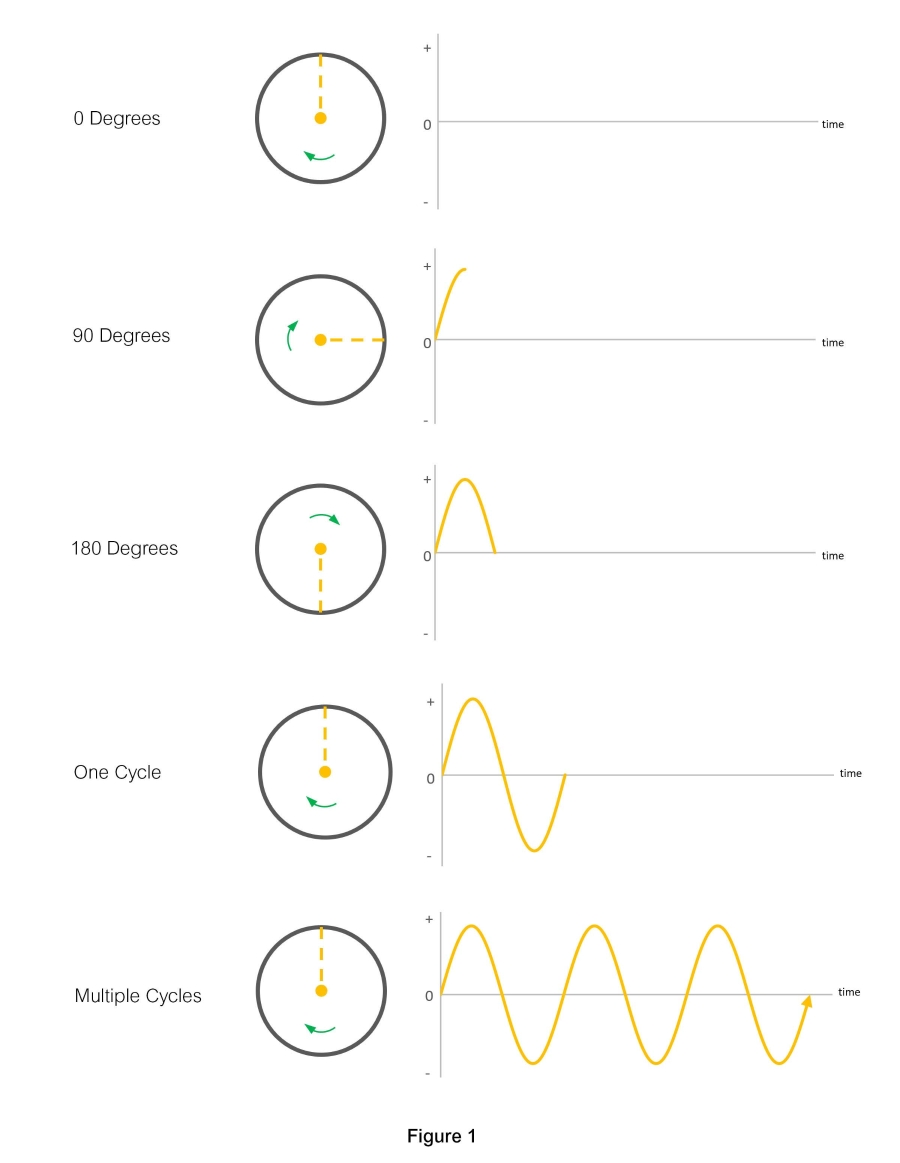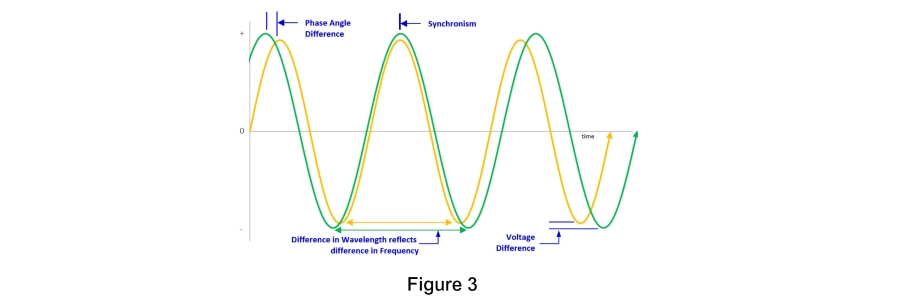A Primer on In-Phase Power Transfer
Switching motor loads between power sources can result in problematic in-rush currents. A prior ASCO White Paper outlined four approaches for mitigating these currents. One approach is to use an in-phase monitor, a solution that ensures transfers occur when phase angle differences will not cause excessive inrush currents. The following sections summarize the operation and application of in-phase monitors in transfer switching.
Defining Phase Angle
Electricity can be produced by rotating a copper coil inside a magnetic field. By powering a device such as an alternator, fuel energy is converted to electricity using a mechanical engine to power rotating equipment.
As an alternator’s copper coils rotate within its magnetic field, the polarity of the resulting electrical charge changes twice with each revolution, with the instantaneous voltage increasing and decreasing throughout each cycle. The resulting current alternates in polarity, hence the term alternating current (ac). Figure 1 illustrates the effect of the changing rotational position or phase angle of the generating device, which produces voltage characterized by a voltage sine wave. An ac motor similarly uses a coil inside a magnetic field and rotates with the alternating current it receives.
Switching motor loads between power sources can result in problematic in-rush currents. A prior ASCO White Paper outlined four approaches for mitigating these currents. One approach is to use an in-phase monitor, a solution that ensures transfers occur when phase angle differences will not cause excessive inrush currents. The following sections summarize the operation and application of in-phase monitors in transfer switching.
Defining Phase Angle
Electricity can be produced by rotating a copper coil inside a magnetic field. By powering a device such as an alternator, fuel energy is converted to electricity using a mechanical engine to power rotating equipment.
As an alternator’s copper coils rotate within its magnetic field, the polarity of the resulting electrical charge changes twice with each revolution, with the instantaneous voltage increasing and decreasing throughout each cycle. The resulting current alternates in polarity, hence the term alternating current (ac). Figure 1 illustrates the effect of the changing rotational position or phase angle of the generating device, which produces voltage characterized by a voltage sine wave. An ac motor similarly uses a coil inside a magnetic field and rotates with the alternating current it receives.




